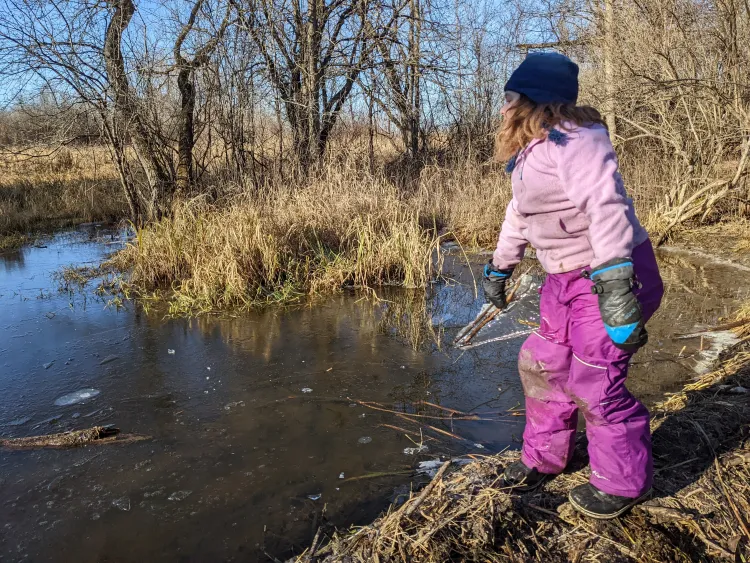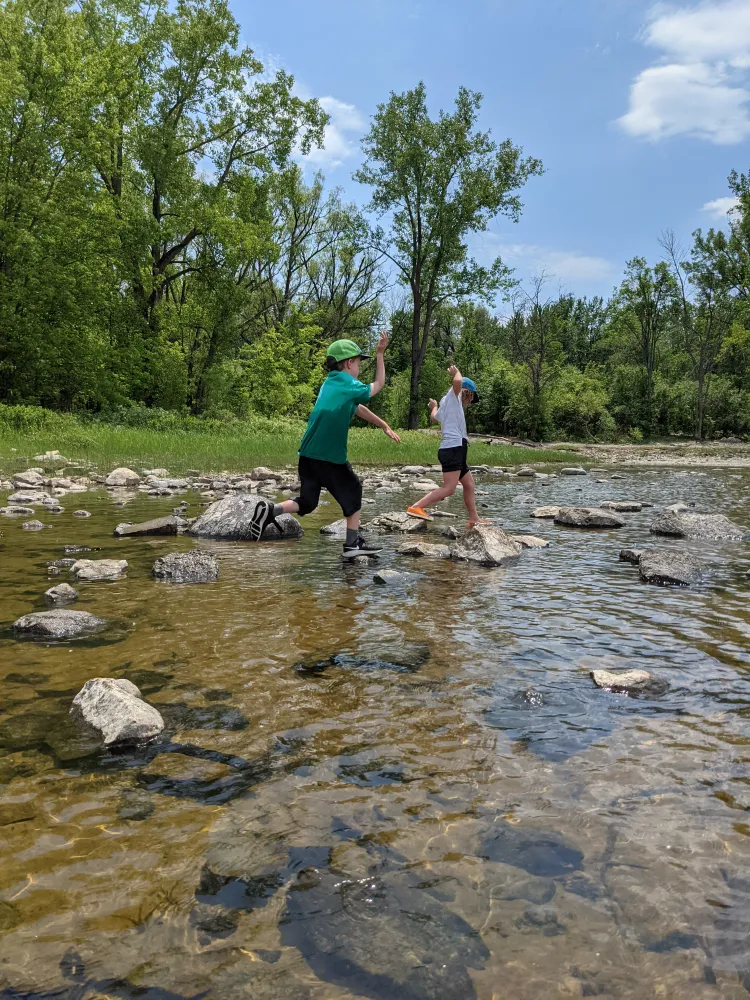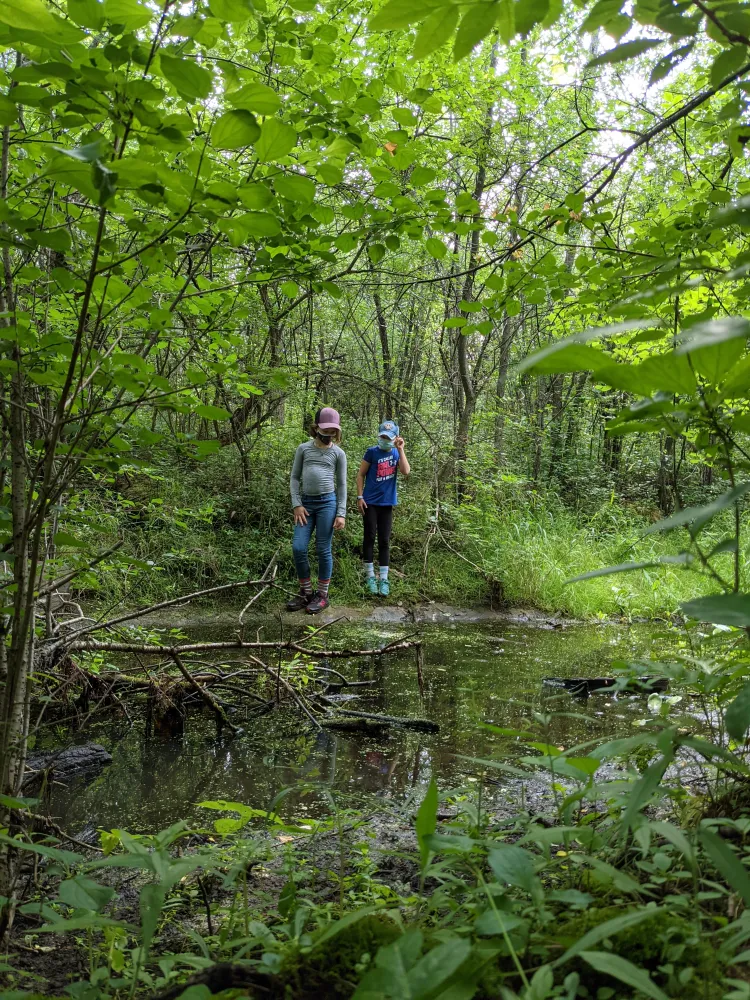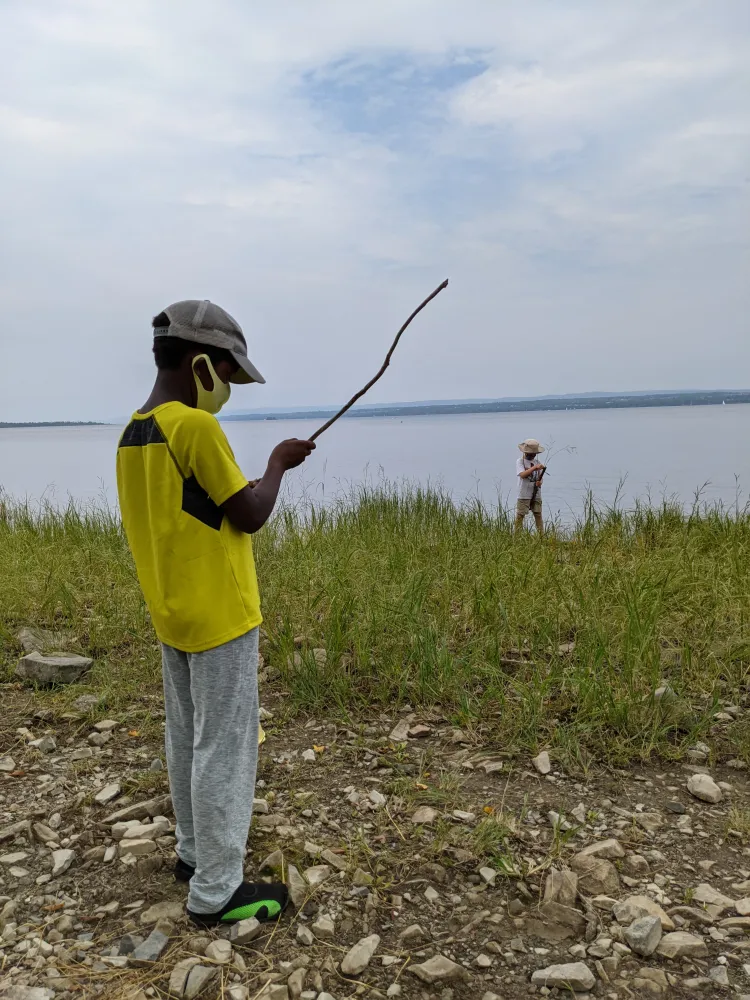Water can offer so many opportunities for play and learning:
A puddle can become a giant ocean and children need to problem solve how to get across.
A pond can encourage resourcefulness and teamwork to construct a bridge with rocks or sticks.
Water can inspire forest kitchen play, becoming the perfect broth for soup or perhaps a magic potion.
Water can provide the opportunity for inquiry and observation – How deep is this puddle? How can we figure it out? Does anything live in the water?
Perhaps it’s time to make a fishing rod with some twine on a stick so we can see what we can catch.
Simply splashing in puddles is so much fun! Such delight and glee accompany running, splashing, and dancing in puddles. How big of a splash can we make?

Playing in or near water can feel quite risky, and it can be easy to lose sight of the rich learning that can emerge because we worry about what can go wrong. It can feel easy to say no or redirect away from water play because we see the inevitability of the cons and these outweighs the pros. Being wet and muddy and cold is something we tend to avoid in so many situations, yet children definitely drift towards experimenting with these exact circumstances, albeit not always deliberately, especially not at first.

Our own memories and the children we work with have taught us that water play is captivating and engaging. It makes sense to explore the opportunity of playing in puddles or near ponds and to figure out how to do it in a safe and kind way. Here are some of our considerations around water play:
Temperature – When the temperatures start to get chilly, being wet is no longer simply a natural consequence of choosing to play near water (full of rich learning on its own) but becomes a safety issue. It’s so much harder to stay warm when wet, so getting water in boots or falling into the puddles can be risky in the colder months. When the temperatures are lower we either choose play spaces that don’t have as much water, or we change the way we interact with it, requiring that play happens around the edges of the water rather than in it.
Depth – When we come across a puddle or pond we will test how deep it is before playing in it. We involve the children in the process and invite them to help figure it out. We often use a stick to poke to the bottom. We look at the depth based on the stick, and look at our boots. We compare them, see which is deeper, and decide whether or not it makes sense to go through or around that particular puddle. When the weather is cold or if someone is trying to stay dry, we decide together what route to take to help us stay out of the water.
Proximity of an Adult – When playing near water we always have an educator based right beside the water, particularly with younger children, so that if someone falls over we are able to help them up quickly.
Gear – If we are on the land and children have brought their backpacks with them, we require that they take off their bags before playing near water – this helps with balance. If a child bends over to look at something on the edge of the pond with a backpack on it can tip them over and make it tough to get back up!



Before heading out onto the land, especially with a new group or when the weather is cool, we often prepare the group for encountering water and make plans together. This might include:
Looking at our Boots– Rain boots are waterproof all the way up, snow boots usually are only at the bottom. We point out which boots are better at keeping water out, which leads to thinking about what happens to dry warm socks in boots that have water in them, which leads to thinking about what happens to dry warm feet inside those socks. We ask who wants to have cold wet feet (which is usually no one) which leads to children having the information they need to make smart choices about walking through or around puddles.
Tucking our Boots into our Rain Pants– Splashing in the water is so much fun! Having boots tucked into pants helps keep the water from sneaking in so the splashing stays fun.
Asking Who Wants to Get Splashed?– Some children love getting all wet, from any direction, and some children like to explore while staying in control of how wet they get. We recommend that these children walk at the front or at the back, away from the enthusiastic splashers, and when we’ve stopped at a play spot and splashing is happening, we set up zones where the play is big and splashy, and where the play is more gentle. We remind children that there is room for all of the play to emerge, and we can look after each other while we’re doing it.

It makes sense to be prepared for water play before we are amongst the puddles because it can be challenging for children to take part in creating guidelines when the call of the water is so strong. If we do end up needing to have the Water Play chat out on the land, we stop in a clear area away from the puddles (rather than beside them) to chat to help children more easily engage in the discussion rather than being distracted by the puddle they’re standing in.
After we have talked about ways to keep water play safe and kind, we take a step back, watch what emerges, and offer safety reminders as needed.
It can feel hard to say yes to play that feels risky. When we work together with the children to co-construct guidelines to keep things safe and kind, provide the opportunity to let it unfold, offer reminders and redirection when needed, and trust in the children and the play, we see the land support such magical and meaningful learning and fun – not only for the children but for the grown ups, too.
I wonder what kind of water play will emerge for you. Happy splashing!

